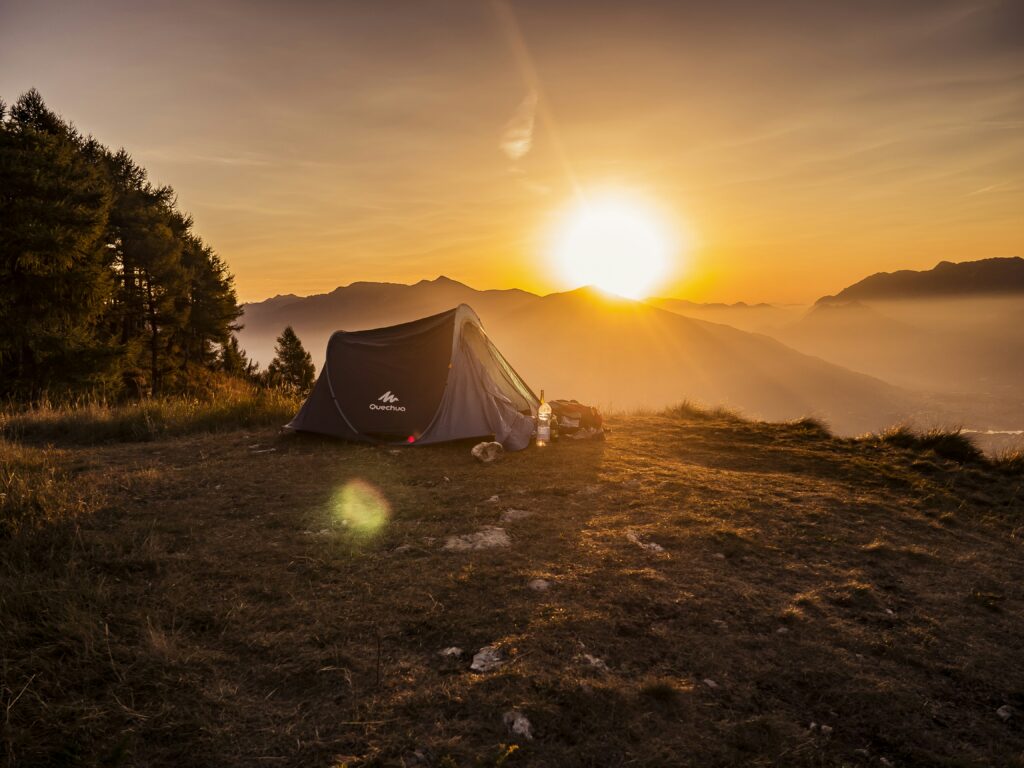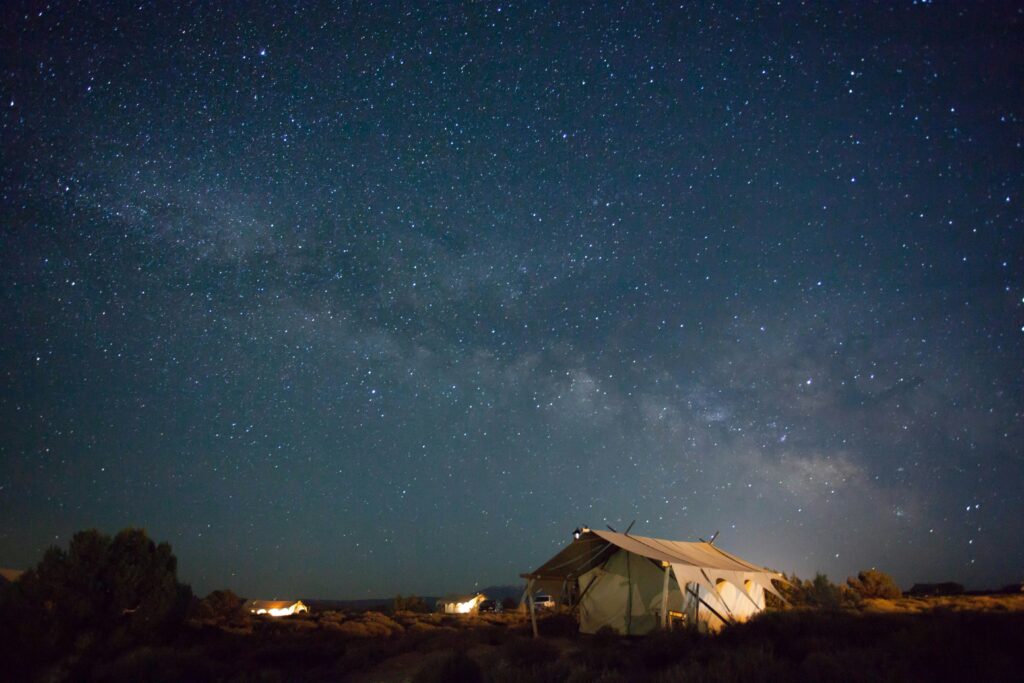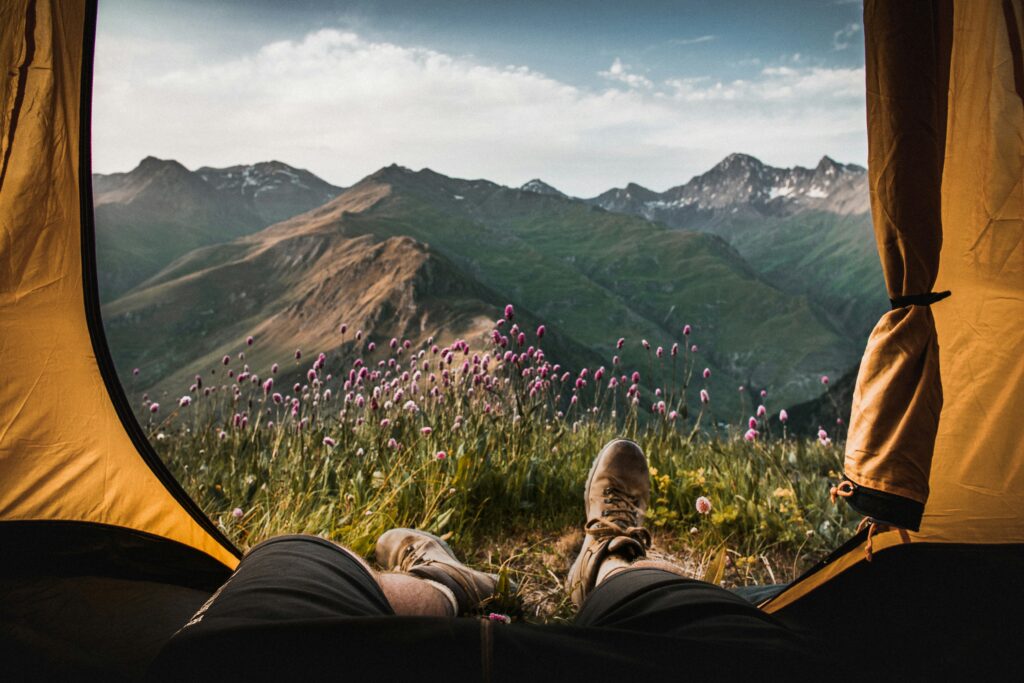Are you torn between the coziness of a quilt and the practicality of a sleeping bag for your camping adventures? Look no further, as this article explores the key differences and benefits of choosing either a quilt or a sleeping bag. Whether you’re a minimalist or a comfort seeker, we’ve got you covered – literally – in this comprehensive comparison. Prepare to make an informed decision that will elevate your camping experience to the next level. Quilt versus sleeping bag – let the ultimate showdown begin!

Warmth
Insulation Material
When it comes to staying warm during your outdoor adventures, the choice of insulation material plays a crucial role. Quilts and sleeping bags utilize different types of insulation to provide warmth. Sleeping bags typically feature synthetic or down insulation, which is encased in baffles to prevent shifting and provide an even distribution of warmth. On the other hand, quilts often utilize down insulation, which is known for its excellent warmth-to-weight ratio and compressibility. Overall, both insulation options can provide sufficient warmth, but it’s important to consider your specific needs and the expected temperature conditions.
Temperature Rating
The temperature rating of a sleep system is another important factor to consider. Sleeping bags are commonly rated by the EN (European Norm) standards, which provide a standardized measurement for thermal insulation performance. Quilts, on the other hand, may not have an official temperature rating, which makes it vital to do thorough research and consider the manufacturer’s specifications when choosing a quilt for specific temperature conditions. Keep in mind that individual sleepers may have different comfort levels, so it’s always better to opt for a sleep system with a slightly lower temperature rating than the expected conditions.
Weight
Whether you’re embarking on a multi-day hiking trip or simply spending a night under the stars, the weight of your sleep system is crucial for a comfortable experience. Quilts are often preferred by ultralight backpackers due to their lightweight design. They eliminate the extra materials used in sleeping bags, such as zippers and hoods, resulting in a significant reduction in weight. On the other hand, sleeping bags may provide a bit more insulation and may be a better choice for cold weather conditions where keeping warm is a top priority. Consider the weight-to-warmth ratio and the anticipated weather conditions to determine which option suits your needs best.
Comfort
Fit and Wrap
When it comes to comfort, both quilts and sleeping bags offer their unique advantages. With quilts, you have the freedom to move your legs and feet more freely, mimicking the comfort of a home bed. However, some sleepers may find it challenging to properly secure the sides of the quilt beneath them, which could result in drafts and compromise warmth. Sleeping bags, on the other hand, offer a snug fit that wraps around your body, providing a cocoon-like feeling that many sleepers find comforting. The choice between the two ultimately comes down to personal preference and desired sleeping style.
Ventilation and Temperature Control
Temperature regulation is essential for a good night’s sleep, especially in fluctuating weather conditions. Quilts often provide better ventilation than sleeping bags due to their open design. This makes them ideal for warmer nights when you don’t want to be overheated. Sleeping bags, with their closed design and hood, are better suited for colder temperatures when retaining body heat is a priority. Consider the anticipated weather conditions and your personal sleeping preferences to determine which sleep system offers the best temperature control for your needs.
Materials and Softness
The materials used in a sleep system can greatly impact comfort. Quilts and sleeping bags are often made from high-quality fabrics that are soft to the touch and gentle on the skin. Quilts usually have a thinner shell material, which promotes breathability and helps regulate body temperature. Sleeping bags, on the other hand, often feature durable and insulating fabrics that can withstand rough outdoor conditions. Consider your personal preference for softness versus durability when choosing between the two options.
Versatility
Layering Option
Versatility is key when it comes to outdoor gear, and both quilts and sleeping bags offer options for layering. Quilts can be easily paired with a sleeping pad and used as a top quilt, providing extra warmth and insulation. Additionally, quilts can be used as an extra layer underneath a sleeping bag for added protection during extremely cold nights. Sleeping bags, while not as easily layered, often come with a zippered design that allows for ventilation and temperature regulation and can be fully unzipped for use as a blanket on warmer evenings. Consider the layering options offered by each sleep system to cater to your specific needs and adaptability requirements.
Multiple Uses
Aside from their primary function of providing sleep comfort, both quilts and sleeping bags offer multiple uses in outdoor settings. Quilts can double as cozy blankets for lounging around a campfire or picnicking during the day. Their lightweight and flexible design make them versatile for various outdoor activities. Sleeping bags, while not as adaptable, still serve as essential gear for camping and can be used as a makeshift shelter by zipping them up partially or completely. Both options provide functionality beyond sleep, so it’s worth considering the versatility options when making your decision.
Portability
Size and Weight
When it comes to portability, both quilts and sleeping bags come in different sizes and weights. However, quilts are often the preferred choice for backpackers due to their compact and lightweight design. They take up minimal space in your backpack and can be compressed down to a fraction of their original size. Sleeping bags, while also available in lightweight versions, tend to be bulkier and may take up more space in your backpack. Consider the size and weight of your sleep system in relation to your outdoor activities and the length of your trip to ensure optimal portability.
Compression and Packing
When it’s time to pack up your sleep system, the ease of compression and packing can make a significant difference. Quilts are typically easier to pack as they are less bulky, and most designs come with a compression sack that allows you to condense them down to a smaller size. Sleeping bags, while bulkier, often come with compression straps that can be used to minimize their packed size. Consider your packing preferences and the available space in your backpack when deciding between a quilt and a sleeping bag.
Ease of Carrying
The ease of carrying your sleep system is another factor to consider, especially if you plan on hiking or backpacking for long distances. Quilts, being lighter and more compact, can make carrying them a breeze. They often come with attachment points that allow them to be securely fastened to your backpack, preventing them from shifting or falling off while in transit. Sleeping bags, although bulkier, may come with additional carrying features such as compression sacks with handles or straps for ease of transport. Assess your carrying needs and the demands of your outdoor activities to determine which option is more convenient for you.

Durability
Fabric and Construction
Durability is an essential consideration when investing in any outdoor gear, and sleep systems are no exception. Both quilts and sleeping bags are generally made with durable materials and construction techniques. Quilts often have a thinner shell material that promotes breathability but may be more susceptible to tears and abrasions. Sleeping bags, on the other hand, are typically made with thicker fabrics to enhance durability and withstand rough outdoor conditions. Additionally, the construction of sleeping bags with baffles and reinforced stitching contributes to their overall longevity. Consider the expected wear and tear of your sleep system and the durability of the materials and construction to ensure it can withstand your adventures.
Maintenance and Care
Proper maintenance and care can significantly extend the lifespan of your sleep system. Both quilts and sleeping bags require regular cleaning to remove dirt, sweat, and oils accumulated during use. Quilts are often easier to clean and dry due to their lightweight and less intricate design. Some quilts can be machine-washed, while others may require handwashing. Sleeping bags, especially those with down insulation, require more delicate care, often necessitating handwashing and air drying to preserve the loft and insulation properties. Follow the manufacturer’s instructions for cleaning and maintenance to ensure the longevity of your sleep system.
Cost
Price Range
Price is a significant consideration when choosing between a quilt and a sleeping bag. Quilts typically range in price from moderately affordable to quite expensive, with high-quality down insulation often commanding a higher price tag. Sleeping bags also vary in price, with synthetic insulation typically being more affordable than down-filled options. The cost of both quilts and sleeping bags can depend on factors such as brand reputation, quality of materials, and design features. Set a budget based on your needs and prioritize features that are most important to you when making your decision.
Long-Term Investment
Viewing your sleep system as a long-term investment can help justify higher upfront costs. Both quilts and sleeping bags, when properly cared for, can last for many years of outdoor adventures. Consider the value of a durable and high-performing sleep system that will provide reliable warmth and comfort season after season. Investing in a sleep system that meets your needs and withstands the test of time can result in significant savings in the long run, as you won’t have to frequently replace lower-quality gear.

Sleeping Positions
Back Sleepers
For back sleepers, both quilts and sleeping bags can provide adequate comfort and support. Quilts allow for more freedom of movement and flexibility, allowing back sleepers to adjust their sleeping position without restrictions. Sleeping bags, with their snug fit, can contour to the natural curvature of the back, providing a cocoon-like feel that some back sleepers find comforting. Consider your specific preferences for freedom of movement versus a snug fit when choosing between a quilt and a sleeping bag.
Side Sleepers
Side sleepers often have specific comfort needs to ensure proper spinal alignment and support. Quilts can be an excellent choice for side sleepers as they allow for ample leg and arm movement. Side sleepers can drape the quilt over their body and easily adjust their sleeping position throughout the night. Sleeping bags, while generally accommodating for side sleepers, may require more careful selection to ensure sufficient room for comfortable side sleeping. Consider the roominess and flexibility of the quilt or sleeping bag design to accommodate your side-sleeping preferences.
Stomach Sleepers
Stomach sleepers often require a flatter sleep surface to avoid strain on the neck and back. Quilts can be an ideal choice for stomach sleepers as they provide the flexibility to lie flat without excessive padding. Stomach sleepers can adjust the quilt to their preference, allowing for a comfortable and supportive sleep position. Sleeping bags can also accommodate stomach sleepers, but it’s essential to choose a design that offers a flatter hood and sufficient room to lie comfortably on the stomach. Consider the flatness and adjustability of the sleep system when catering to your stomach-sleeping needs.
Camping and Outdoor Use
Weather Resistance
When it comes to camping and outdoor use, weather resistance is crucial to ensure a comfortable and safe experience. Both quilts and sleeping bags offer varying levels of weather resistance. Quilts, with their open design, may not provide as much weather protection as sleeping bags. However, many quilt designs come with additional features such as draft collars and straps to secure them to your sleeping pad, reducing drafts and increasing overall weather resistance. Sleeping bags, with their enclosed design and hood, offer better protection against wind, rain, and colder temperatures. Consider the expected weather conditions of your camping trips and the level of weather resistance required to choose the appropriate sleep system.
Setup and Packing
The ease of setup and packing is especially important when camping or engaging in outdoor activities. Quilts are often simpler to set up, requiring minimal adjustment and attachment to your sleeping pad. They can be easily spread out and secured, allowing for a quick and hassle-free setup. Sleeping bags, while not as straightforward, often come with a zipper system that allows for easy entry and closure. Packing quilts is also generally more convenient due to their compact and lightweight design. Consider the ease of setup and packing required for your camping trips to choose the sleep system that best suits your needs.
Cleaning and Maintenance
Washing and Drying
Whether you’re camping for a few days or embarking on an extended outdoor adventure, keeping your sleep system clean is essential for hygiene and longevity. Quilts are often easier to wash, as they can usually be machine-washed or hand-washed, depending on the materials. Drying quilts is also relatively quick due to their lightweight and thin construction. Sleeping bags, especially those with down insulation, require more delicate care and may require handwashing and air drying to preserve the loft and insulation properties. Follow the manufacturer’s instructions for washing and drying to maintain the cleanliness and performance of your sleep system.
Stain and Odor Resistance
Outdoor adventures can often result in stains and odors on your sleep system, making stain and odor resistance an important consideration. Quilts, with their easy cleaning and drying capabilities, are generally more stain and odor resistant. They can be quickly washed after a trip to remove any dirt, sweat, or odors accumulated during use. Sleeping bags, while still resistant to stains and odors to a certain extent, may require more thorough cleaning procedures to eliminate lingering smells. Consider your personal preference for cleanliness and the likelihood of encountering stains and odors to determine which option suits your needs best.
Personal Preferences and Sleeping Styles
Preference for Weight or Bulk
When it comes to personal preferences, some individuals prioritize weight and bulk, while others prioritize comfort and roominess. Quilts are often preferred by ultralight backpackers and those looking to save on weight and space. Their lightweight and compact design make them an ideal choice for individuals who prioritize mobility and minimalism. Sleeping bags, while usually bulkier and heavier, may provide a more comfortable and snug sleeping experience for those who prioritize the feeling of being surrounded and protected. Consider your personal preferences for weight, bulk, and overall comfort to make an informed choice between a quilt and a sleeping bag.
Preference for Snugness or Roominess
The preference for snugness or roominess during sleep varies from person to person. Quilts, with their open design, often provide a more roomy and flexible sleep experience. They offer freedom of movement for those who prefer to stretch out or adjust their sleeping position throughout the night. Sleeping bags, with their enclosed design, provide a snugger and more cocoon-like sleeping environment. Some individuals find the snug fit of a sleeping bag comforting and conducive to a better night’s sleep. Consider your personal preference for snugness or roominess when selecting your sleep system to ensure maximum comfort and satisfaction.
In conclusion, the choice between a quilt and a sleeping bag ultimately depends on your specific needs, preferences, and the anticipated outdoor conditions. Quilts offer lightweight versatility and enhanced freedom of movement, making them an excellent choice for ultralight backpacking and warmer climates. Sleeping bags provide a cocoon-like feel, better insulation for colder temperatures, and enhanced weather protection. Consider factors such as warmth, comfort, versatility, portability, durability, cost, and the specific demands of your sleeping style and outdoor activities to make an informed decision. Remember, a well-chosen sleep system can greatly contribute to a restful and enjoyable night’s sleep, enhancing your overall outdoor experience.
